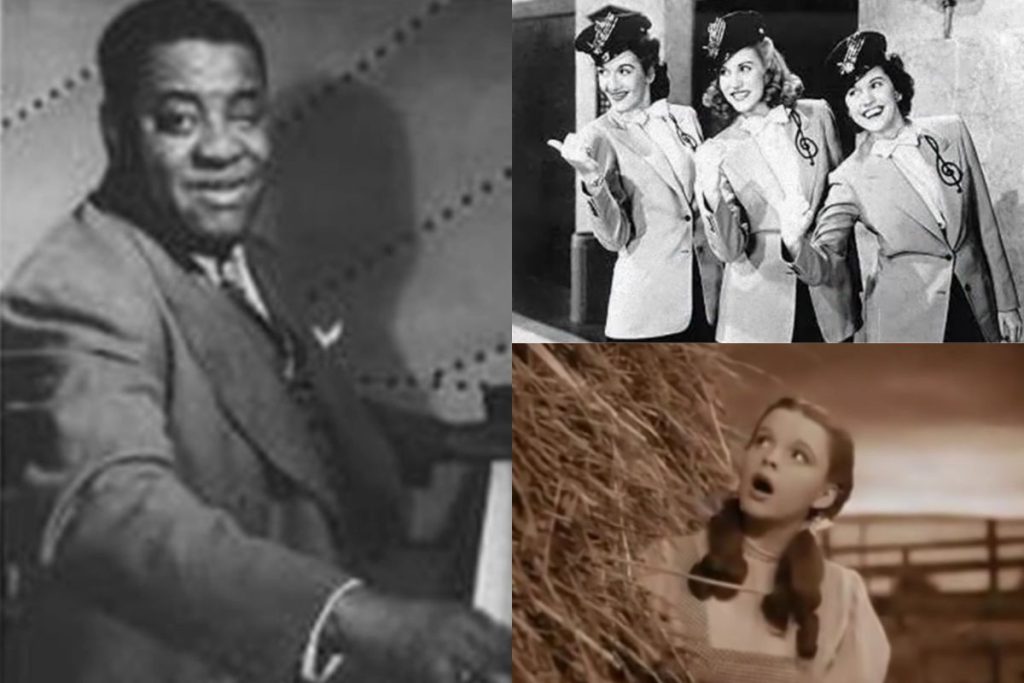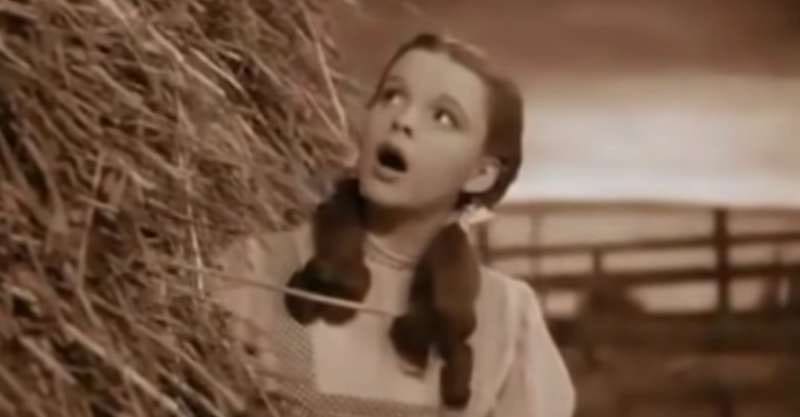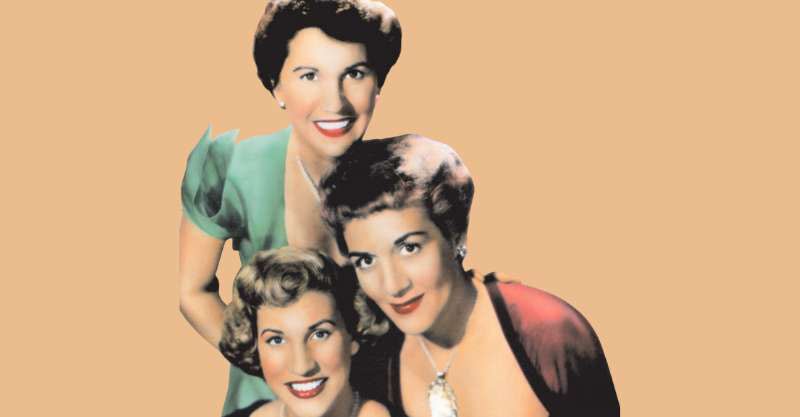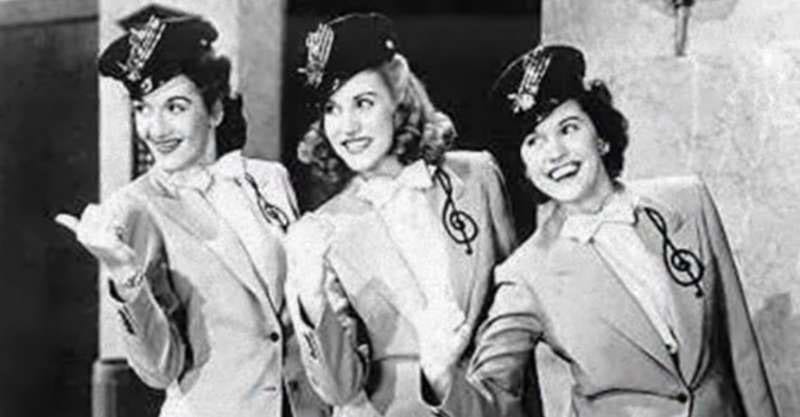
1939 is a landmark year that gifted us with remarkable tunes, unforgettable performances, and iconic artists. If you want a refresher of this good music, here are the best songs from 1939.
“Over The Rainbow” By Judy Garland
Song year: 1939
“Over the Rainbow,” performed by Judy Garland, is a timeless and iconic musical composition that continues to touch audiences even today. Written for the 1939 film The Wizard of Oz, this legendary song has gone down in Hollywood history, capturing hearts with its enchanting melody and emotional resonance.
In addition to featuring on an unforgettable film soundtrack during the Golden Age of Hollywood, “Over the Rainbow” won an Oscar in 1939 for Best Original Song – a testament to its remarkable qualities as a piece of art.
Furthermore, it was voted as the best song of the twentieth century back in 2001. Many artists have since covered or adapted this instantly recognizable tune; however, none quite compare to Judy Garland’s heartfelt rendition that first dazzled listeners over eight decades ago.

“Moonlight Serenade” By Glenn Miller
Song year: 1939
“Moonlight Serenade” is undoubtedly one of the most iconic compositions from the Swing Era. This enchanting swing ballad was composed by legendary musician Glenn Miller in 1939, with lyrics later added by Mitchell Parish.
The origins of “Moonlight Serenade” can be traced back to 1935 when it was initially titled “Now I Lay Me Down to Sleep.” Fast forward a few years, and the song became synonymous with Glenn Miller’s remarkable Big Band sound.
The Orchestra, under Miller’s direction, made history when they performed this captivating piece at the Glen Island Casino in 1939.
Glenn Miller had also ensured that his magnificent composition would reach even greater heights as “Moonlight Serenade” graced movie screens across America.
“God Bless America” By Kate Smith
Song year: 1939
Patriotic music reached a new height with Kate Smith’s rendition of Irving Berlin’s “God Bless America,” which was introduced during her radio performances in the fall of 1938 and continued into early 1939.
The song quickly gained popularity as it conveyed hope and faith, capturing the hearts of Americans struggling through difficult times.
Kate Smith’s powerful voice perfectly captured Berlin’s personal love for his homeland while also emphasizing its importance to all who sang it. However, despite its enduring legacy as a stirring anthem for American patriotism, Smith’s association with the iconic song faced controversy in recent years due to her problematic past.
Nonetheless, “God Bless America” is a significant classic tune that resonates with many generations. With lyrics like “stand beside her and guide her,” listeners are reminded of both their individual roles in upholding national ideals and their collective identity as proud citizens striving to preserve what makes their country exceptional.
“Body & Soul” By Coleman Hawkins
Song year: 1939
“Body & Soul” is one of the most famous jazz standards of all time and was famously recorded by Coleman Hawkins in 1939. The song has a unique beginning with a rest, making its opening instantly recognizable to jazz enthusiasts.
The recording industry was also going through major changes at this time, with technological advancements allowing for better sound quality and longer playing times on records.
Improvisation became increasingly important within instrumental music, and “Body & Soul,” with its intricate melody and complex chord progressions, inspired future improvisations by other jazz musicians.

“If I Didn’t Care” By The Ink Spots
Song year: 1939
“If I Didn’t Care” was one of the biggest hits of 1939 and a classic ballad in its own right. The song featured Bill Kenny’s smooth tenor lead vocals, contrasting perfectly with Jones’s deep bass.
Following the success of “If I Didn’t Care,” The Ink Spots released a string of hit songs in a similar style. Their first number-one hit, “Address Unknown,” cemented their place as one of the most successful acts of that era.
However, “If I Didn’t Care” became their signature tune and remains an enduring classic to this day.
There is no denying that The Ink Spots had a huge influence on popular music during this period. Their smooth vocal harmonies and ballad-style songs paved the way for many future artists in different genres.
“Deep Purple” By Larry Clinton
Song year: 1939
Larry Clinton’s “Deep Purple” is a timeless classic from the big band era. Originally composed in 1934 as an instrumental piece, it wasn’t until five years later, when lyrics were added, that it became a chart-topping hit for Clinton and his orchestra with vocals by Bea Wain.
Clinton was a popular musician, recording numerous other songs such as “My Best Wishes” and “My Reverie.” Although he had success with many compositions, “Deep Purple” remains one of his most well-known tunes even to this day.
Furthermore, “Deep Purple” went on to be covered by various artists over the years, including Nino Tempo & April Stevens.
“And the Angels Sing” By Martha Tilton
Song year: 1939
“And the Angels Sing” is a classic swing song that was popularized by Martha Tilton in 1939. The song was composed by Ziggy Elman and Johnny Mercer, with Abe Osser arranging it for Benny Goodman’s orchestra.
Tilton’s vocals added a sweet touch to the lively tune, making it an instant hit.
Martha Tilton was known for her unmistakable voice and style, which made her stand out among other vocalists of her time.
Listening to “And the Angels Sing,” you can’t help but tap your feet along with its upbeat tempo- providing an excellent example of how well-produced big-band songs conquered airwaves during that period in American history.
“Beer Barrel Polka (Roll Out The Barrel)” By Will Glahe & His Orchestra
Song year: 1939
One of the most iconic songs of 1939 was “Beer Barrel Polka (Roll out the Barrel)” by Will Glahe & his Orchestra. Originally composed in 1927, this catchy tune became an instant hit in its 1939 release, selling millions of copies and becoming a staple at dance parties and events.
Interestingly, “Beer Barrel Polka” wasn’t just limited to one performer. Eddie DeLange and Shep Fields & his Rippling Rhythm Orchestra also covered the song in that same year, leading to even more popularity for this timeless classic.
Overall, “Beer Barrel Polka (Roll out the Barrel)” is a shining example of how music can bring people together through shared experiences.

“South of the Border (Down Mexico Way)” By Shep Fields & His Rippling Rhythm Orchestra
Song year: 1939
In 1939, “South of the Border (Down Mexico Way)” by Shep Fields and his Rippling Rhythm Orchestra became a hit song across America. The track describes a journey to Mexico, with lyrics evoking the culture and beauty of Latin America.
Featuring vocals by Hal Derwin, the song was ranked as one of the top 60 pop songs that year and reached number 10 on the music charts.
Shep Fields, born Saul Feldman, was a successful big band leader during the 1930s who helped popularize swing music in America. He recorded numerous hits throughout his career, but “South of the Border” remains one of his most enduring tracks.
For vintage music enthusiasts or anyone looking for nostalgic tunes from decades past, Shep Fields’s version of “South Of The Border (Down Mexico Way)” is available on various albums showcasing some best songs from the 1939-1945 era, like “All The Hits And More”.
“Three Little Fishies” By Kay Kyser
https://www.youtube.com/watch?v=rW7WNoImYM0
Song year: 1939
“Three Little Fishies” by Kay Kyser was one of the most popular songs of 1939, recorded by several big bands, including The Glenn Miller Orchestra. The Brunswick label released Kyser’s version in May 1939, and it quickly became a hit.
Even though the song is a novelty tune, it features Saxie Dowell’s music and Josephine Carringer and Bernice Idins’ lyrics.
As with many other hits from this period, “Three Little Fishies” speaks to the cultural context of the time. It was written during an era when swing music dominated popular culture in America, and big bands were churning out new hits every day.
The enduring popularity of “Three Little Fishies” reflects not only on Kay Kyser but also on Saxie Dowell, who wrote the music for this classic song.
“Tea for Two” By Art Tatum
Song year: 1939
“Tea For Two” by Art, Tatum is a masterpiece in jazz music. The song, composed by Vincent Youmans and with lyrics by Irving Caesar, was first introduced in 1924 but became even more popular when Tatum performed it on April 12, 1939.
Tatum’s version showcased his exceptional piano skills and musical improvisation abilities that set him apart from other musicians at the time. His unique style of playing featured incredible speed, intricate chord progressions, and flawless execution that left audiences mesmerized.
Overall,” Tea For Two” continues to be celebrated today as an iconic piece of American music and is remembered for its contribution to jazz history.”

“At the Woodchopper’s Ball” By Woody Herman
Song year: 1939
“At the Woodchopper’s Ball” is a popular instrumental track recorded by Woody Herman in 1939, and it remains one of his greatest musical accomplishments to this day. The song gained popularity thanks to its catchy melody, swinging rhythm section, and the stylized clarinet solo from Herman himself.
The Woodchoppers were a group of talented jazz musicians who joined forces with Woody Herman in the late 1930s to create an innovative sound that combined swing music with influences from earlier jazz styles.
“At the Woodchopper’s Ball” demonstrates why Woody Herman was one of the greatest bandleaders of all time. The song perfectly captures his unique style and energy while showcasing some truly impressive musicianship from each member of his band.
“Back in the Saddle Again” By Gene Autry
Song year: 1939
“Back in the Saddle Again” is one of the most popular and enduring cowboy songs of all time. The song was co-written by legendary singer, songwriter, and actor Gene Autry with Ray Whitley back in 1939.
The catchy melody and upbeat lyrics perfectly captured the spirit of the Wild West and life on the ranch.
The song has since been covered by numerous artists over the years, but none have quite matched Autry’s original recording.
“Blue Orchid” By Glenn Miller
Song year: 1939
Another song that made it to the list of best songs from 1939 is “Blue Orchid” by Glenn Miller. This song was a hit during the swing era of jazz music and showcased Miller’s musical arrangements.
Glenn Miller was no stranger to producing popular hits during his time, with “In the Mood” being another notable mention from 1939. However, despite its popularity among listeners, “Blue Orchid” did not make it onto the official Billboard chart for that year.
As part of his contributions to Big Band and Swing music genres, Glenn Miller played a significant role in shaping popular music at that time.
“Beer Barrel Polka (Roll Out The Barrel)” By The Andrews Sisters
Song year: 1939
“Beer Barrel Polka (Roll out the Barrel)” by The Andrews Sisters was one of the top hits of 1939 and remains a classic tune enjoyed by audiences today. This upbeat, danceable polka song was written by Lew Brown, Wladimir Timm, Jaromír Vejvoda and performed with great energy and excitement by The Andrews Sisters.
The Andrews Sisters were a popular vocal group known for their tight harmonies and infectious rhythms. “Beer Barrel Polka (Roll Out the Barrel)” was the first major hit that helped to establish them as rising stars in the music industry.
Even today, this classic song continues to be played at weddings, parties, and other festive occasions where people gather to celebrate life’s joys. It’s catchy melody and cheerful lyrics make it an enduring favorite among people of all ages who appreciate good music.

Top Songs From 1939, Final Thoughts
In conclusion, 1939 was a remarkable year for music history. The era saw the rise of famous artists like Glenn Miller, Judy Garland, and Kate Smith, who managed to produce iconic tracks that are still appreciated today.
From Judy Garland’s soulful “Over the Rainbow” to Billie Holiday’s profound “Strange Fruit,” these top songs from 1939 have stood the test of time and continue to inspire present-day music artists.
Besides, millennials can enjoy listening to vintage tunes produced in the past decade thanks to quality musical recordings.